ABOUT THE CONDUCTORS
Alexander Jiménez serves as Professor of Conducting, Director of Orchestral Activities, and String Area Coordinator at the Florida State University College of Music. Prior to his appointment at FSU in 2000, Jiménez served on the faculties of San Francisco State University and Palm Beach Atlantic University. Under his direction, the FSU orchestral studies program has expanded and been recognized as one of the leading orchestral studies programs in the country. Dr. Jiménez has recorded on the Naxos, Neos, Canadian Broadcasting Ovation, and Mark labels. Deeply committed to music by living composers, Dr. Jiménez has had fruitful and longterm collaborations with such eminent composers as Ellen Taafe Zwilich and the late Ladisalv Kubík, as well as working with Anthony Iannaccone, Krzysztof Penderecki, Martin Bresnick, Zhou Long, Chen Yi, Harold Schiffman, Louis Andriessen, and Georg Friedrich Haas. The University Symphony Orchestra has appeared as a featured orchestra for the College Orchestra Directors National Conference and the American String Teachers Association National Conference, and the University Philharmonia has performed at the Southeast Conference of the Music Educators National Conference (now the National Association for Music Education). The national PBS broadcast of Zwilich’s Peanuts’ Gallery® featuring the University Symphony Orchestra was named outstanding performance of 2007 by the National Educational Television Association.
Active as a guest conductor and clinician, Jiménez has conducted extensively in the U.S., Europe, and the Middle East, including with the Brno Philharmonic (Czech Republic) and the Israel Netanya Chamber Orchestra. In 2022, Dr. Jiménez led the Royal Scottish National Orchestra in a recording of works by Anthony Iannaccone. Deeply devoted to music education, he serves as international ambassador for the European Festival of Music for Young People in Belgium and serves as Festival Orchestra Director and Artistic Consultant for the Blue Lake Fine Arts Camp in Michigan. Dr. Jiménez has been the recipient of University Teaching Awards in 2006 and 2018, The Transformation Through Teaching Award and the Guardian of the Flame Award, which is given to an outstanding faculty mentor. Dr. Jiménez is a past president of the College Orchestra Directors Association and served as music director of the Tallahassee Youth Orchestras from 20002017.

William Whithead is an orchestral conductor, string music educator, and violist pursuing the Ph.D. in Music Education at Florida State University. He is currently the Music Director of the FSU Sinfonia, the Director of the Tallahassee Youth Orchestras’ Intermezzo Strings, and District 3 Chairperson on the executive board of the Florida Orchestra Association. He is Music Director-elect of the Studio Orchestra at FSU.
Previously, Mr. Whitehead served as Director of Orchestras at Braden River High School. Under his direction, the Braden River Symphony Orchestra and BRHS Chamber Orchestra regularly achieved superior ratings at District and State Concert Music Performance Assessments (MPAs). Mr. Whitehead’s students have successfully auditioned into Florida All-County, All-State, and youth orchestras, have frequently earned superior ratings at District and State Solo & Ensemble MPAs, and are pursuing degrees in music performance and music education at various universities around the country.
Mr. Whitehead maintains an active presence as an educator and adjudicator. He currently teaches orchestra and guitar at Montford Middle School and will continue to serve as string faculty for the FSU Summer Music Camps this summer. He has assisted and guest conducted the SCF-Bradenton Symphony Orchestra, adjudicated performance events throughout Florida, and presented on practical topics and original research at the national conferences of both the College Orchestra Directors Association and the American String Teachers Association.
Mr. Whitehead holds the B.M. in Viola Performance and B.M.E. in Instrumental Music Education from Florida State University and the M.M. in Music Education from Kent State University. He currently studies orchestral conducting with Dr. Alexander Jiménez, and has further studied conducting as a 2022 Fellow of the Conductor’s Institute of South Carolina.

ABOUT THE FEATURED SOLOIST
Dawson Coleman is a professional musician, educator, and advocate of new music and arts. He picked up the saxophone at age 12 and immediately fell in love with the art of music performance whilst under the tutelage of saxophonist and orchestral director Dr. Keith Dodson from 2012-17.
An established soloist, Dawson has earned First Prize in the 2022 Charleston International 20th Century Music Competition, alternate in the 2022 Florida MTNA Young Artist Competition, finalist in the U.S. Army Band “Pershing’s Own” 2022 Collegiate Solo Competition, and alternate in FSU’s 2019 Young Artist Competition. Dawson has performed free public recitals in Huntsville, AL, Pensacola, FL, Tallahassee, FL, and Titusville, FL and frequently engages communities through performances and Q&As at churches and public schools.
As a supporter of new music, Dawson has participated in numerous consortia, commissions, and premieres. Most recently, he has commissioned Matthew Howell to write a piece for alto saxophone and electronics that will be premiered on Dawson’s Master’s Solo Recital at Florida State University on April 29, 2023. He premiered Brian Junttila’s Concertino for Saxophones at Polymorphia’s (FSU’s New Music Ensemble) 2020 Spring Concert and FSU’s 2022 Festival of New Music and has also premiered chamber works by Nicholas Villane and Andrew Boss.
Dawson holds the Bachelor of Music degree in woodwind performance with specialized studies in music education from Florida State University. He is currently pursuing the Master of Music degree in woodwind performance studying under Dr. Geoffrey Deibel at Florida State University with an anticipated graduation date of May 2023.

NOTES ON THE PROGRAM
Schubert: Rosamunde Overture
It is very likely that you have never heard the overture to Rosamunde. After this performance, you will still have never heard the overture to Rosamunde. That’s because there is no overture to Rosamunde!
Franz Schubert had terrible luck with opera. In 1820, after several operatic failutes, Schubert wrote music for a three-act melodrama, Die Zauberharfe (The Magic Harp), in collaboration with librettist Georg von Hoffman. Die Zauberharfe was written as a reaction to the popularity of Mozart’s Die Zauberflöte (The Magic Flute) several years prior, but faired exceptionally poorly, due in large part to its libretto. After only a handful of stagings, Die Zauberharfe was pulled from production and all of the text and accompanying materials were lost. Two years later, Schubert made another attempt
at opera with Alfonso und Estrella based on a libretto by Franz von Schober. Alfonso und Estrella would never be staged in Schubert’s lifetime—it was refused by all of the major German opera houses.
In 1823, Schubert was asked by the playwright Helmina von Chézy to compose incidental music her play, Rosamunde, Fürstin von Zypern (Rosamunde, Princess of Cyprus). Schubert accepted this task, resulting in the incidental music to Rosamunde, D. 797, excerpts of which are still frequently performed today. However, Schubert ran out of time to write an overture prior to the first performance of Rosamunde. Schubert took to his previous compositions and sketches in an attempt to find something suitable for this first performance.
Things get less clear at this point. Some scholars say that Schubert decided to substitute in his overture from Die Zauberharfe, being quite proud of it. But as a result, when the piano reduction of the Rosamunde incidental music was published several years after Schubert’s death, the overture to Die Zauberharfe was mistakenly published as a part of it. Others say that Schubert had considered the overture to Die Zauberharfe, but decided against it in favor of his overture to Alfonso und Estrella, which Schubert found more appropriate. In this theory, how Die Zauberharfe came to be associated with Rosamunde is unexplained besides an editorial mistake on the part of the publisher of the aforementioned piano reduction.
What can be said is that the overture you will hear tonight is the overture to Die Zauberharfe, but it is better known as the mistaken overture to Rosamunde. As Rosamunde (the play) was also a commercial failure, the text is lost. Without context for either Die Zauberharfe or Rosamunde, there is nothing to relate the musical material to. Instead, with its Mozartian themes and Rossini-like bubbly character, you are encouraged to paint your own picture and enjoy the overture for what it is: a general “Overture to Anything!”
– William Whitehead
Parry: Lady Radnor’s Suite
Helen Pleydell-Bouverie, the Countess of Radnor, is barely known as an important figure in music history if not for the Suite in F for Strings written by the emminent English composer, Hubert Parry. Yet Lady Radnor’s work was critical to paving the way for young English women to pursue careers in music. And all of this in the Victorian era of the late 19th century. The fact that women served as members of professional English orchestras beginning in the early 20th century when orchestras like the Vienna Philharmonic, among others, did not have women in their ranks until much, much later is due in great part to Lady Radnor. Even today, according to one study, 36.6 percent of continental European orchestras are women, compared to 40 percent in the U.S. and 44 percent in England. In fact, women were first hired at a major orchestra in 1913 in, you guessed it, England.
Lady Radnor’s Orchestra was highly regarded by British royalty, the artistic elite, and audiences throughout England. Lady Radnor was lauded in her time as a fine conductor and visionary. Of course, her standing in British society combined with her considerable financial position allowed her opportunities that others without such means would not have had. Nevertheless, she put those resources to good use to promote women in the arts. As such, in 1893 she asked Hubert Parry to write something for her string orchestra, which he was delighted to do. The suite was first played on 29 June 1894 by a 72-piece (!) string orchestra conducted by Lady Radnor herself. It was soon published by Novello & Co. and became a staple of string orchestra repertoire as Lady Radnor’s Suite.
The work is written in a late 19th-century “Baroque” style modeled after the Baroque suite (Parry was considered an authority on Bach) in six short movements: Prelude, Allemande, Sarabande, Bourée, Slow Minuet, and Gigue. But the work is entirely in Parry’s language –a genteel Victorian soundscape. As such, this is not, as Phillip Brookes states, “a pastiche as much as a contemporary work with a nod toward the past.” Parry has preserved the style of each dance carefully while giving them his own English hallmark.
– Alexander Jiménez
Weignein – Rhapsody for Alto Saxophone and Orchestra
Belgian composer André Weignein composed the Rhapsody for Alto Saxophone and Orchestra for the occasion of the 5th International Adolphe Sax Competition in Dinant (Belgium) in 2010. This is not a programmatic work, but one which develops spontaneously into a natural musical journey. The Rhapsody exploits and explores both the technical potential and the expressive nature of the saxophone.
In the first movement, the soloist develops virtuosic arabesques that are strung together to create an uncertain sound world combining technical reliability with natural harmonic shifts. Expressiveness is the distinguishing characteristic of the second movement. The saxophone’s characteristic rich tone invites a sense of serenity. The color and atmosphere allow one freedom to day dream and to imagine. The third movement opens with a Tarantella in the orchestra. The tempo is extremely fast in striking contrast to the calm of the preceding movement. The melodic line is lively and varied. Supported by rhythmic motifs, and on one occasion exposed, it progresses to a brilliant unison passage that compounds the sense of virtuosity. Highlighted by a remarkable and convincing show of force, the Rhapsody concludes with a final majestic and breathtaking flourish.
– Notes from the orchestral score by Scherzando Music Publishers
Rimsky-Korsakov – Capriccio espagnol
Nicolai Rimsky-Korsakov’s career stood in the very center of Russian musical life of the second half of the nineteenth century. His first career was in the Russian navy, but he soon garnered success in music. Known primarily for his fifteen operas, he was instrumental in the rising importance of that genre in Russia. In addition to his fame and influence as a composer, he was also head of the conservatory in St. Petersburg – his statue dominates the little park directly across the street from the conservatory and the famed Mariinsky Theatre. In the West, of course, we know him primarily for his symphonic overtures and the tone poem, Scheherazade. His ability as an orchestrator and teacher of orchestration is one of his many legacies – Igor Stravinsky was one of his students. In fact, much of the marvelous musical atmosphere that audiences adore in Stravinsky’s early ballets, the Rite of Spring, Firebird, and Petrouchka, leads directly back to Rimsky-Korsakov and the orchestral style of his operas. And it is of no small interest that there are sections in Debussy’s La Mer and Ravel’s Daphnis et Cloé that seem lifted right out of Scheherazade. A fascination with the exotic, with non-Western subject matter was a prime characteristic of Romanticism, and Russian music of the late nineteenth century is exemplary of this predilection.
Capriccio espagnole (1887) dates from the time of his ever-popular Scheherazade and Russian Easter Overture, and is just as infused with exotic and ethnic musical color as the latter works. While based upon indigenous Spanish themes, Capriccio espagnole is much more than a simple suite of orchestrated folk tunes. The composer was adamant about that, and the marvelous orchestral effects and completely integrated structure are clear evidence of the originality of the composer’s vision. There are five sections, beginning with “Alborada,” a dance celebrating the rising sun that features florid solos by the clarinet and violin. The horn section begins the second section, “Variazioni,” with a rather doleful melody, quickly taken up by the strings, followed by the English horn and more iterations thereafter. The third section is basically a reprise of the opening, but with a master of the orchestra like Rimsky-Korsakov at the helm, the colors are all redone. A “Scena e canto Gitano” (scene and Gypsy song) follows, with various sections of the orchestra, beginning with the trumpets, playing their own recitative-like passages. From time to time, the composer directs the strings to imitate the sounds of a guitar. An elegant dance leads without pause into the closing section, “Fandango asturiano.” The fandango is a vigorous dance, usually accompanied by guitars and castanets, and in this case, representative of the area of Asturias, located in northwest Spain, on the Bay of Biscay. A return to the music of the opening and a frenetic dash to the end tops off yet another masterpiece of Spanish music written by a non-Spaniard.
– Wm. E. Runyan
University Philharmonia Personnel
Alexander Jiménez, Music Director and Conductor
Violin I
Madelyne Garnot‡
Elizabeth Milan
Alyssa Donall
Hope Welsh
Sierra Su
Daniela Ramirez
Gabriel SalinasGuzman
Sarita Thosteson
Francesco Capitano
Sean Hartman
Bailey Bryant
Alexander Roes
Christopher Wheaton
Joan Prokopowicz
Violin II
Victoria Joyce*
Carlos Cordero
Michelangelo
Woodrich
Delaney Reilly
Mari Stanton
Ruby Moore
Max Warren
Karolyne Lugo
Elina Nyquist
Kali Henre
Ismar Cabrera
Harshul Mulpuru
Christopher Chiarotti
Viola
Keara Henre*
Tyana McGann
Abby Felde
Harper Knopf
Emma Patterson
Spencer Schneider
Phil Prasse
Emily Lombard
Cello
Emma Hoster*
Natalie Taunton
Caleb Singletary
Marina Edwards
Liam Sabo
Luke Ponko
Abigail Fernandez
Sophie Stalnaker
Noah Hays
Jaden Sanzo
Bass
Christian Maldonado*
Charles Storch
Layla Feaster
Lucas Kornegay
Harp
Lauren Barfield*
Flute
Ashleigh Wallace*
Peyton Dillon*
Piccolo
Adeline Belova
Oboe
Sarah Ward*
Alec McDaniel*
Loanne Masson
Samantha Osborne
Clarinet
Sadie Murray*
Jariel Santiago*
Joshua Collins
Reymon Contrera
Bassoon
Ryder Kaya*
Carson Long*
Timothy Schwindt
Hannah Farmer
Horn
Jordan Perkins*
Alexandro Garcia*
AC Caruthers
Isaac Roman
Trumpet
Brian Ratledge*
CarlosManuel Aceves*
Trombone
Christian Estades*
Connor Stross
Bass Trombone
Tristan Goodrich
Tuba
Matthew Morejon*
Percussion
Abby McNulty*
Jake Fenoff
James Wolff
Will Howald
Kenneth Sharkey
Jacob Dell
Equipment Manager
Sierra Su
Orchestra Manager
Heather Simpson
Administrative Assistant
Amanda Frampton
Orchestra Librarians
Nathan Haines
Sebastian Jimenez
‡ Concertmaster
* Principal /Co-Principal

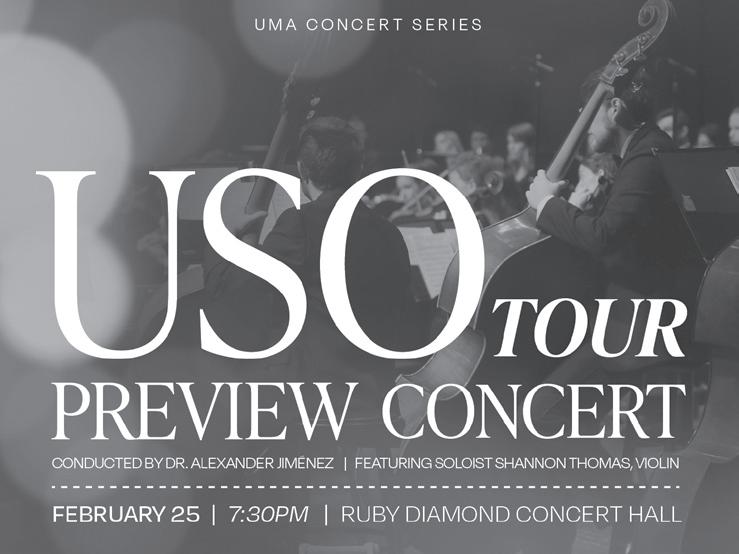
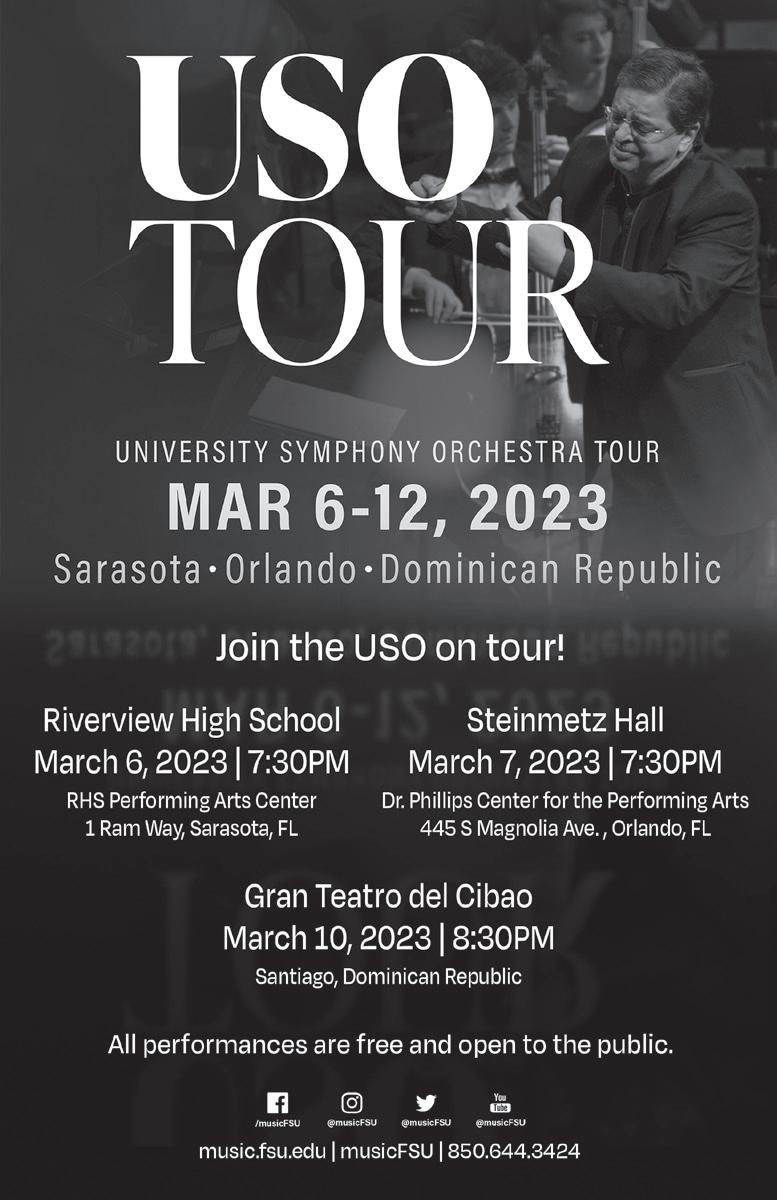

September 18, Bak & Chang, viola/piano
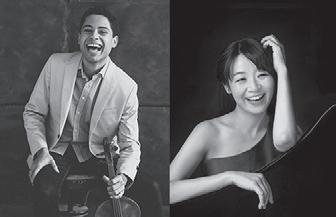
October 23, Dominic Cheli, piano
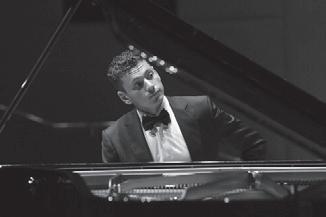
January 22, Sinta Quartet, saxophone


February 17, Jasper String Quartet, Valentine Fundraiser, 7 PM

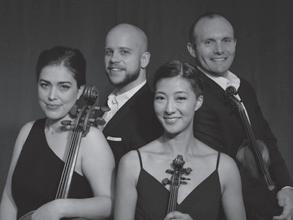
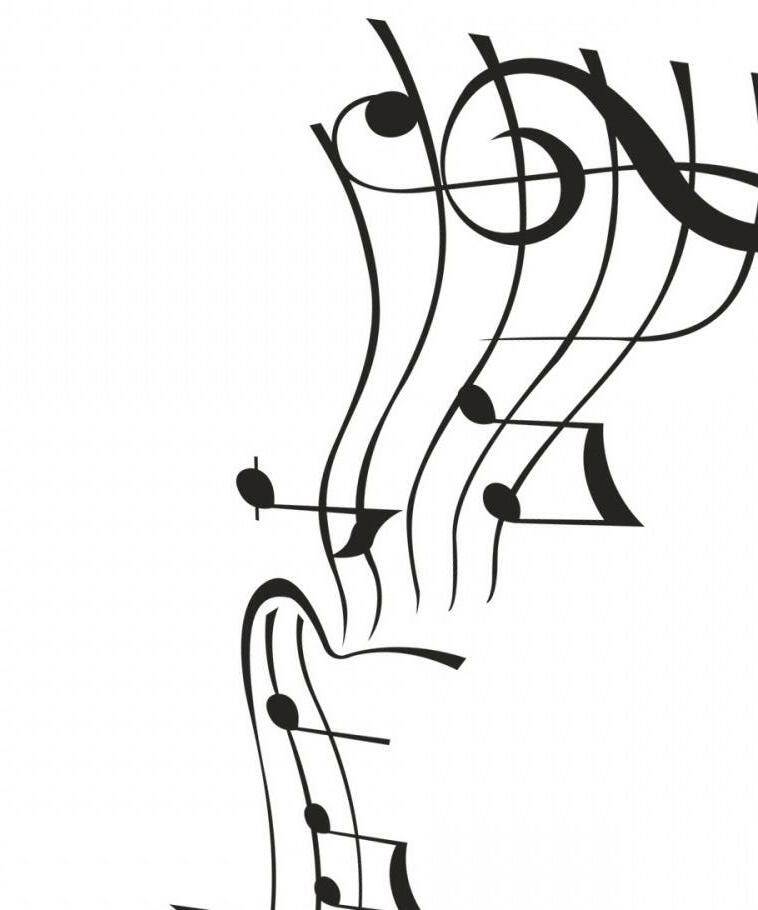
St. Peter’s Anglican Cathedral
March 5, Coro Vocati, vocal ensemble

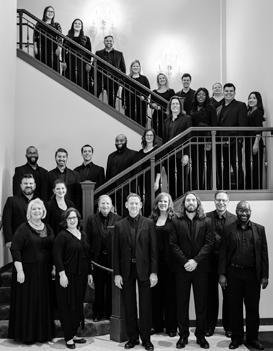
May 7, Cuarteto Latinoamericano, string quartet
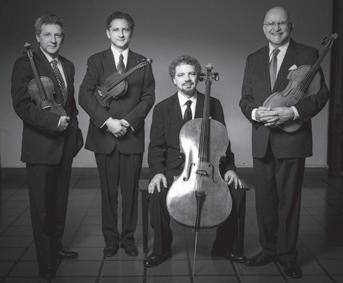
2022-23 Concert Season www.theartistseries.org 850-445-1616
4 PM
Hall Livestream & Video available
Live Concert,
Opperman
2022-2023 Concert Season
– Celebrating 35 Years of Song! –
FALL
Sunday, November 20 4:00 PM
Coronation Mass in C major, W.A. Mozart
*Tickets: tcchorus.org or call 850-597-0603

UNITY 16
Sunday, January 29 4:00 PM
“Repair The Future”
Weather, Rollo Dilworth, Poem by Claudia Rankine
Joined by The Florida A&M University Concert Choir
SPRING
Sunday, April 30 4:00 PM
Carmina Burana, Carl Orff

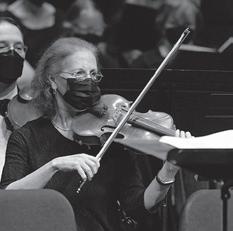
All performances in Ruby Diamond Concert Hall, The Florida State University

P hoto : C laire t imm P hotogra P hy
Michael Hanawalt, Artistic Director
Florida State University COLLEGE OF MUSIC
UNIVERSITY MUSICAL ASSOCIATES
2022-2023
Dean’s Circle
Jim and Betty Ann Rodgers
Mary and Glenn Cole
Margaret and Russ Dancy
Louie and Avon Doll
Patrick and Kathy Dunnigan
Gold Circle
Richard Dusenbury and Kathi Jaschke
Kevin and Suzanne Fenton
* Emory and Dorothy Johnson
Marty Beech
Kathryn M. Beggs
Greg and Karen Boebinger
* Karen Bradley
Donna Callaway
Dr. Kathryn Karrh Cashin
Brian Causseaux and W. David Young
Pete and Bonnie Chamlis
Jody and Nancy Coogle
Jim and Sandy Dafoe
Claire de Lune
Floyd Deterding and Dr. Kelley Lang
Jack and Diane Dowling
* Bonnie Fowler, Armor Realty
Joy and James Frank
William Fredrickson and Suzanne Rita Byrnes
Larry Gerber
John and Mary Geringer
Michael D. Hartline
Myron and Judy Hayden
* Marc J. and Kathryn S. Hebda
Dottie and Jon Hinkle
Todd S. Hinkle
Karolyn and Ed Holmes
* Paula and Bill Smith
Albert and Darlene Oosterhof
Bob Parker
Todd and Kelin Queen
Francis C. Skilling, Jr.
Bret Whissel
Marilynn Wills
Sustainer
Jonathan Jackson and Greg Springer
Alexander and Dawn Jiménez
Dr. Gregory and Dr. Margo Jones
Howard Kessler and Anne Van Meter
Michael Killoren and Randy Nolan
Dennis G. King, Esq.
Mr. and Mrs. T. Last
Dr. Annelise Leysieffer
Linda and Bob Lovins
Kay and Ken Mayo
Robert and Patty McDonald
Walter and Marian Moore
Ann Parramore
Thomas Gary Parrish
Dr. Evelyn Ploumis-Devick and David Devick
Mary Anne J. Price
* David and Joanne Rasmussen
* Ken and J.R. Saginario
Nell and Marshall Stranburg
William and Ma’Su Sweeney
* Alison R. Voorhees
Teresa White
Candy and Barbara Williams
Kathy D. Wright
Patron
Joyce Andrews
Mary S. Bert
Marcia and Carl Bjerregaard
Virginia W. and John L. Bryant
Joan and Kip Carpenter
Stacey Christian
Malcolm Craig
Rochelle Davis
William H. Davis
Jeannie Head Dixon
Judith Flanigan
John S. and Linda H. Fleming
L. Kathryn Funchess
Ruth Godfrey-Sigler
Bryan and Nancy Goff
Harvey and Judy Goldman
Dianne Gregory
Julie Griffith
Carole Hayes
Jerry and Bobbi Hill
Madeleine Hirsiger-Carr
Jane A. Hudson
Richard and Linda Hyson
Judith H. Jolly
Carolyn Jordan
Dean Kindley
* Jonathan Klepper and Jimmy Cole
Frances C. Kratt
Donna Legare
Dan MacDonald
William and Gayle Manley
Mary “Jo” Mansfield
Pat and Mike Meredith
Ann and Don Morrow
Dr. William C. Murray
Clyde and Sandra Palmer
Torrio Osborne and Marcía Porter
Karalee Poschman
Gloria Priest
Edward Reid
John and Carol Ryor
Paula Saunders
Scott Scearce
Betty Serow and Gigi Foster
Jeanette Sickel
Judy and Mike Stone
George S. Sweat
Marjorie Turnbull
Dr. Ralph V. Turner
Paul van der Mark
Sylvia B. Walford
Geoffrey and Simone Watts
Jeff Wright
Associate
Jayme Agee
Robert M. Bukovic
David and Mary Coburn
Carla Connors and Timothy Hoekman
Martha Cunningham
Dr. Aleksandra and Dr. Geoffrey Deibel
Pamala J. Doffek
John and Jodi Drew
The Fennema Family
Gene and Deborah Glotzbach
Laura Gayle Green
Miriam Gurniak
Donna H. Heald
Nicole and Kael Johnson
Joseph Kraus
DL LaSeur and Lennie Helfand
Alan and Marilyn Marshall
Kathleen and Lealand McCharen
Moncrief Flom Family
Sanford Safron
Sudarat Songsiridej and Mary Schaad
Mr. and Mrs. K. Scott Wagers
Karen Wensing
Drs. Heidi Louise and Christopher Williams
Lifetime Members
Les and Ruth Ruggles Akers
John and Willa Almlof
Florence Helen Ashby
Mrs. Reubin Askew
* Tom and Cathy Bishop
Nancy Bivins
Ramona D. Bowman
André and Eleanor Connan
Russell and Janis Courson
* J.W. Richard and Tina Davis
Ginny Densmore
Nancy Smith Fichter and Robert W. Fichter
Carole D. Fiore
Patricia J. Flowers
Jane E. Hughes
Hilda Hunter
Julio Jiménez
Kirby W. and Margaret-Ray Kemper
Patsy Kickliter
Anthony M. and Mallen E. Komlyn
Fred Kreimer
Beverly Locke-Ewald
Cliff and Mary Madsen
Ralph and Sue Mancuso
Meredith and Elsa L. McKinney
Ermine M. Owenby
Mike and Judy Pate
Jane Quinton
David D. Redfield
Laura and Sam Rogers, Jr.
Dr. Louis St. Petery
Sharon Stone
Donna Cay Tharpe
Brig. Gen. and Mrs. William B. Webb
Rick and Joan West
John L. and Linda M. Williams
Corporate Sponsors
Beethoven & Company MusicMasters Business Sponsors
WFSU Public Broadcast Center
*University Musical Associates Executive Committee
The University Musical Associates is the community support organization for the FSU College of Music. The primary purposes of the group are to develop audiences for College of Music performances, to assist outstanding students in enriching their musical education and careers, and to support quality education and cultural activities for the Tallahassee community. If you would like information about joining the University Musical Associates, please contact Kim Shively, Director of Special Programs, at kshively@fsu.edu or 850-644-4744.
The Florida State University provides accommodations for persons with disabilities. Please notify the College of Music at 850-644-3424 at least five business days prior to a musical event if accommodation for disability or publication in alternative format is needed.
























